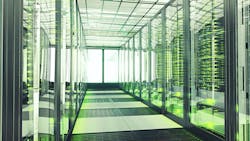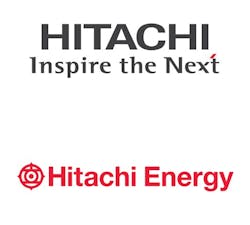It is impossible to imagine being unable to access our banking information, pay bills online, search the web, download documents, get email, or stream our favorite programs — whenever and however we desire. Everyday tasks we can do on our smartphones, smart TVs and laptops are highly dependent on communications networks and back-office systems, most of which are hosted at major data centers around the globe. It is projected that by 2025, “every person in the developed world will have at least one interaction with a data center every 18 seconds of their lifetime.”[1]
The technologies housed in these locations are sophisticated, complex and require significant systems to ensure highly reliable, secure and resilient operations — all of which depend on a continuous and consistent source of electricity.
24x7 Power
Data centers generally are categorized into three major categories, namely enterprise, cloud (non-hyperscale) and hyperscale. The consensus is that any data center containing 5,000 servers, spanning a minimum of 10,000 square feet (930 square meters) and offering at least 40MW of capacity counts as a hyperscale facility.[2]
Power supply reliability and quality are of utmost importance to enable data centers to achieve the levels of performance needed to satisfy their primary customer’s needs and their end user’s expectations, which is for always-on and available service. Major trends in energy demand for data centers worldwide indicate enterprise data centers have declined from 97.62 to 32.61 Terawatt hours from 2015 to 2021, while hyperscale centers have increased from 31.1. to 86.6 Terawatt hours over the same timeframe, suggesting a significant shift toward the hosted data center model.[3] In 2020, data centers globally accounted for nearly 1% of worldwide energy use.[4]
Modern Power Distribution
Having an electrical distribution service that is as modern as the technology that is housed within these facilities is an essential factor that must be provided for this critical market segment. With these data hubs, the challenges of supplying power, cooling the space, and increasing physical capacity continue to surface issues that data center operators need to manage. When considering a build-out of a facility, many cost factors need to be taken into consideration, including design, construction and commissioning. But chief among them is power, which is the single largest recurring cost of running a data center, accounting for 70% to 80% of the budget. Cooling alone, a major driver of energy consumption, can easily amount to 20% or more of total costs.
With demand for data center capacity on a continuous upward trajectory, there is an increasing focus on carbon reduction and environmental sustainability as major drivers for data centers. Netflix, the media streaming giant, points out in their sustainability report that in 2019, about 94,000 Megawatt hours (MWhs) were consumed by their content data centers, with an additional 357,000 MWhs provided by their internet service delivery partners like Amazon Web Services (AWS) and Google Cloud.[5] AWS in their 2021 Sustainability Report noted that they are well on the path to achieving their goal of powering their operations with 100% renewable energy by 2025.[6] Similarly, Microsoft has announced plans to be carbon negative by 2030, and Google has also stated its intention to realize a carbon-free future.
Driving Sustainability
How can data centers meet the challenges of increasing growth (i.e., more and more centers) and increasing load (i.e., higher power density) and the requirements to be more environmentally sustainable?
Some key initiatives that data center owners and operators are focusing on include greater use of renewable energy sources, improving the power usage effectiveness (PUE),[7] leveraging greater energy, and optimizing building with sophisticated facility management systems. Mega trends like technology democratization (essentially, increased availability of advanced technologies), digitalization and greater collaboration are factors that will have a significant impact on data centers and the energy supply provided by their utility suppliers and partners.
Democratization will mean more industry participants leveraging capabilities like artificial intelligence (AI) to unlock the capability to automate tasks and execute appropriate decisions. This will be built on a foundation of being able to capture and validate data from multiple sensors and sources and process this data using sophisticated computing power and create “digital twins” that more effectively mimic the real world. Continuous improvement will be accomplished by monitoring and implementing corrective actions based on the mapping of real-world outcomes that were forecasted by simulations. This will lead to a greater level of digitalization where business and operational models and relationships are transformed with greater access to information and interaction.
Smart Power
The energy industry, particularly on the supply side, is progressing toward greater levels of democratization and digitalization not only in the control centers that operate and manage the grid, but in the substations that serve the data center community. Just as these centers represent a new level of technical maturity; many utilities are migrating their traditional distribution networks, switch gear, and protection from analog or point-to-point digital connections using the industry standard of IEC 61850, which supports peer-to-peer communications between devices, helping ensure faster responses to critical incidents. IEC 61850 is also emerging as an accepted standard in the renewables industry, as well as for utilities.
Moving toward a more intelligent grid will require both centralized control and autonomy that can only be realized by greater levels of digitization (converting analog to digital) and digitalization (leveraging increasing reliance on technology). The adoption of smarter grid technologies is enabling grid operators to more quickly address disruptive events and rapidly mitigate challenges that could impact data center performance.
Cybersecurity is another common bond between data centers and the energy utilities that serve them. With a greater reliance on telecommunication and network services that deliver data center content and services, the need for privacy, resilience to threat vulnerabilities, and the ability to thwart potential interruptions of services are extremely important to commercial providers. The need to ensure critical infrastructure protection of the energy supply is essential for service reliability and national security.
Smart Partners
One of the most important factors that a data center operator must realize is the need to work collaboratively with their utility and with technology suppliers that are trusted partners — partners who not only understand the data center's needs but who also have a depth of experience working with distribution utilities. Hitachi Energy is a recognized and trusted provider of these components and systems. The company works closely with power utilities, renewable energy developers, data center operators and other participants in the energy ecosystem to meet critical customers' current and future needs for reliability, resilience and safety. Please see https://www.hitachienergy.com/us/en/media/blogs/2022/09/powering-data-centers-sustainably for additional insight on this topic.
[1] https://www.danfoss.com/en/about-danfoss/insights-for-tomorrow/integrated-energy-systems/data-center-power-consumption/
[2] https://www.datacenterdynamics.com/en/analysis/what-is-a-hyperscale-data-center/
[3] IEA Statista 2021
[4] https://www.science.org/doi/10.1126/science.aba3758
[5] Netflix 2019 Sustainability Accounting Standards Board (SASB) Report
[6] https://www.aboutamazon.com/planet
[7] PUE = Total facility power / IT equipment energy Total facility power refers to the amount of power that the facility uses. It includes all hardware inside the data center, as well as cooling systems, power delivery components, and lighting systems.
Sponsored By:

